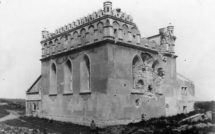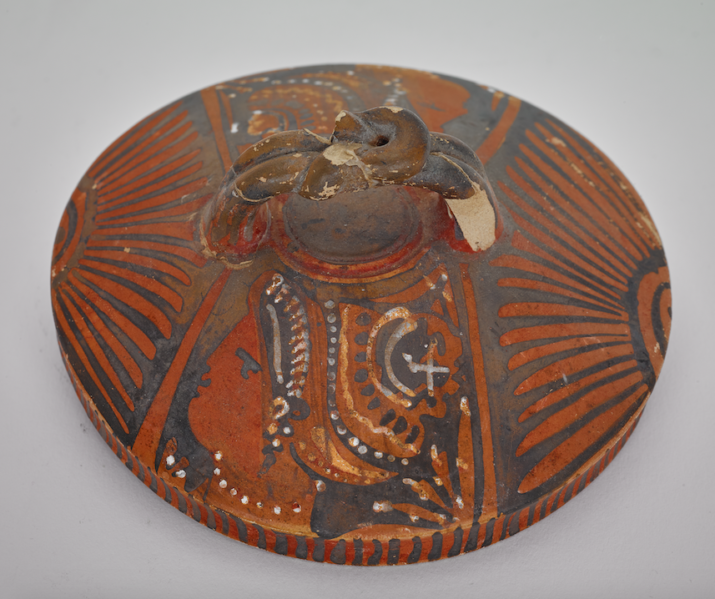
Parallel Heritages, Humanities in Action: The Columbia and Sorbonne Collections of Antiquities
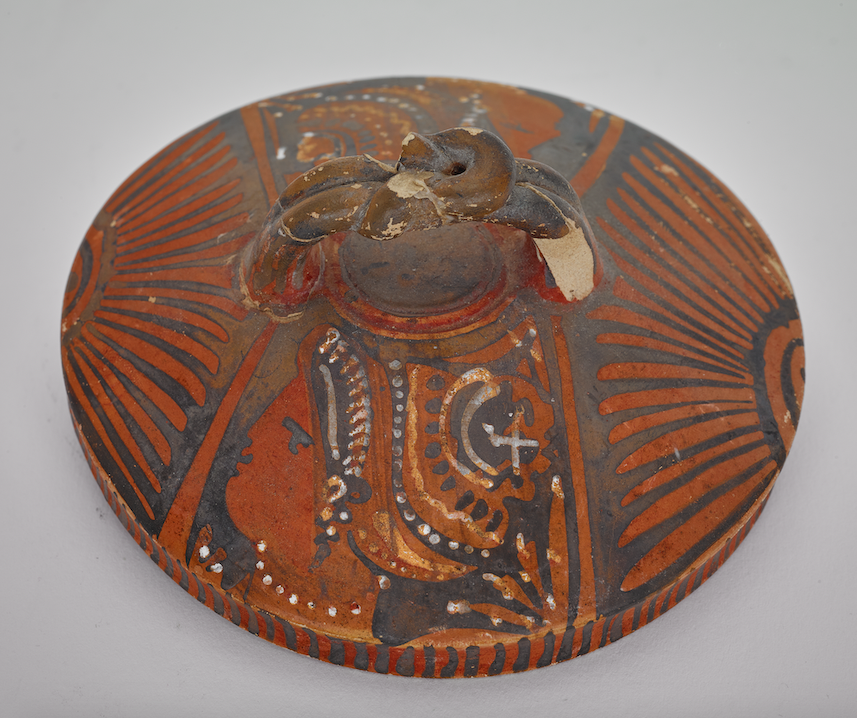
This is part of our special feature, Digitization of Memory and Politics in Eastern Europe.
In early 2019, an exciting joint research project was launched by the Department of Art History and Archaeology at Columbia University in New York and the Department of Histoire de l’art et Archéologie of the Université Paris 1 Panthéon-Sorbonne, focusing on the origin, development, and present state of university collections of Classical antiquities at both institutions. This goal of this project, named Parallel Heritages, Humanities in Action: The Sorbonne and Columbia Collections of Antiquities is to achieve a complete inventory of these collections, a detailed tracing of their genesis and history, and an exploitation of their value for the benefit of the respective university and city. Beyond their inherent research and teaching values, these collections are part of both universities’ tangible heritage, whose long-term conservation and transmission are an institutional concern, and immaterial heritage, whose objects encapsulate both an epistemological approach and historical record of teaching classical archaeology.
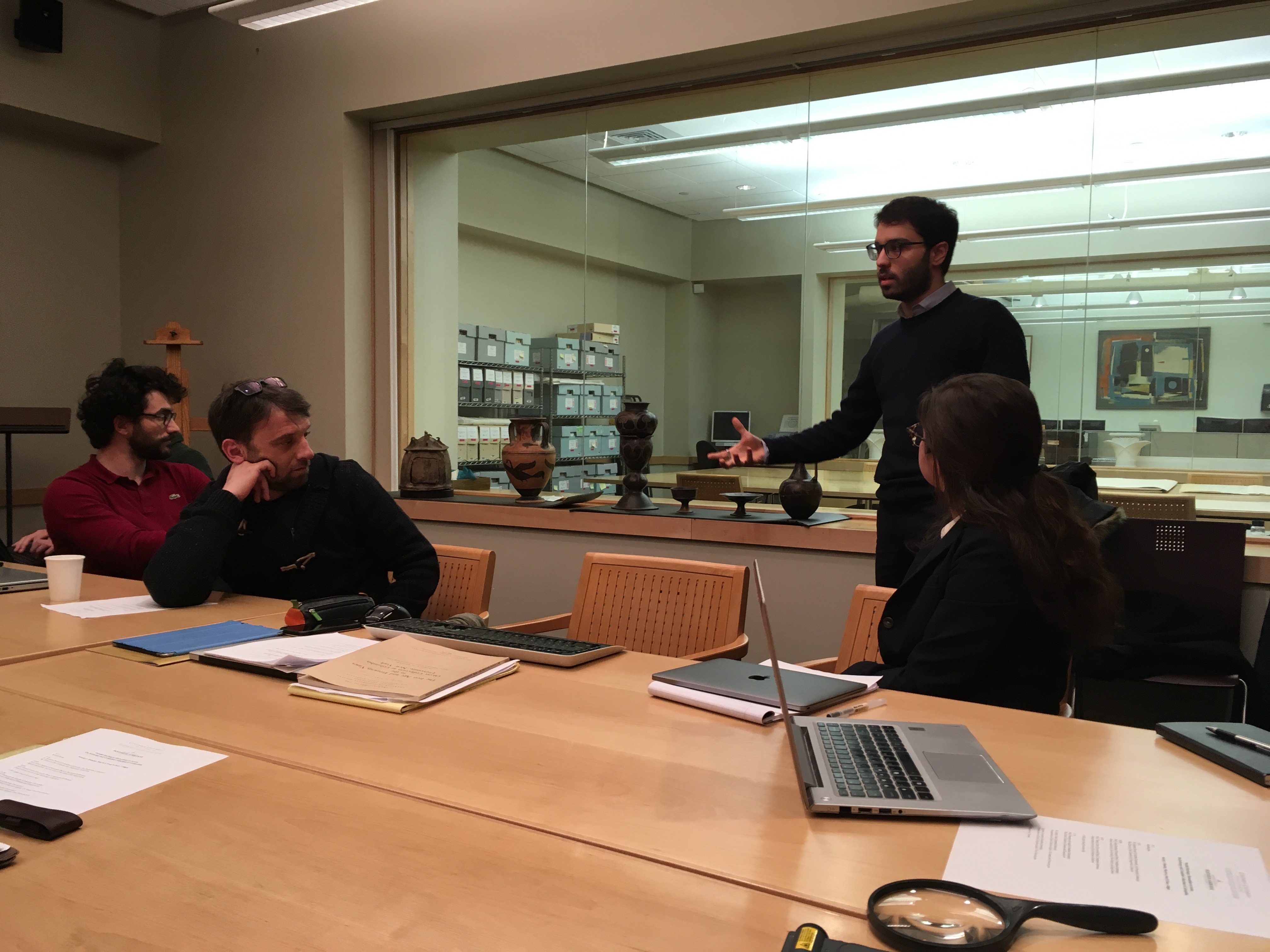
Columbia PhD student Giovanni Lovisetto speaking about Faliscan objects in the Olcott Collection at Avery Library’s Wallach Fine Arts Study Center
In a way, these collections recount the parallel histories of knowledge and of scholarly traditions within two different national and academic settings. Bringing together faculty members, post-doctoral researchers, curators, conservators, and graduate students from both institutions, the project commenced in March 2019 with a weeklong research seminar, excursions, and workshops at Columbia University, which surveyed the history of the respective university collections in New York and Paris. Participants jointly explored the genesis and history of the Sorbonne and Columbia collections within the context of their respective European and American academic traditions, as well as in the traditions of each institution, thus laying the foundations for a better understanding of the historical connections and divisions between European and American academic and public institutions, their history of collecting antiquities, and their use of casts and historical artifacts as tools for teaching and research. The meeting in New York will be followed up with a second weeklong research seminar in Paris in November of this year and the results of faculty and students’ research will be presented in EuropeNow as a loose set of feature articles in the coming issues.
In order to set the stage for these more in-depth articles on individual collections, objects, and object groups, we are providing here a summary overview of the project, its primary goals, and work accomplished to date.
University art, scientific collections, and college or campus museums have long been underappreciated and neglected during the twentieth century. However, their status has re-gained considerable prestige over the past few years. For universities in both the United States and Europe they have become an issue of scholarly interest, not only from a heritage preservation perspective, but also as a source for historic self-investigation and a wide range of scholarly research initiatives and projects. Indeed, trans- and interdisciplinary research on university collections is most rewarding. Such studies not only give insights into the history and origins of collections and knowledge, but also into the material culture of universities. Parallel Heritages, Humanities in Action! takes into consideration the origin, development, and present state of university collections of Classical antiquities gathered from the end of the nineteenth century at the Sorbonne in Paris and at Columbia University in New York and aims to provide an inventory of these collections, a tracing of their genesis and history, and an exploitation of their value for the benefit of the respective communities within of university and city. Beyond their inherent research and teaching values, these antiquities collections are part of both our universities’ tangible heritage, whose long-term conservation and transmission are a pressing institutional concern.
In Europe, the use of university collections for teaching and research has dramatically declined since the end of the Second World War, and university museums have suffered from a drastic reduction in financial and human resources that would have been required for curating them. This long-term neglect has, in some cases, resulted in the permanent damage of collections or even their loss. However, for more than a decade now, university heritage has been a matter of renewed interest for European universities and scholars, who have started new research initiatives, including curatorial cataloguing and conservation projects that have benefitted from the creation of local, national, and international professional associations and academic networks.
In France, no legal provisions exist concerning the status of university collections. The legal status of every single object must be individually established by investigating the general history of the collection as well as the process of its acquisition and further history in the collection. From this perspective, legal scholars have to be involved in the research process in order to clarify legal issues such as the status of exports for antiquities from Italy and Greece during the late nineteenth century that now form part of the collection in Paris. Apart from objects deriving from permanent loans of public collections to universities, national curators—a senior branch of the French Civil Service—have no authority over university collections, while there is not a single university curator throughout France: legally speaking, French university professors are the only players involved in curating university collections; it is part of their duty, alongside research and teaching. Managing and studying these collections therefore remain liaised with individual research projects and specific academic endeavors. From this perspective, our effort to jointly pursue a research project on the history of the Sorbonne and Columbia University collections is considered profitable to both institutions.
In France, the first Chair of Archaeology was created in 1876 at the Sorbonne. Following the German model of a Lehrapparat, Maxime Collignon (1883-1917) and Gustave Fougères (1919–1927), the second and third Professor of Classical Archaeology at the Sorbonne, worked on establishing a teaching collection of plaster casts and Greek antiquities. They obtained permanent loans from the Musée du Louvre as well as gifts from private collectors and the Greek state through the National Museum in Athens, ultimately gathering a collection of several hundred pieces that allowed the Sorbonne to compete with German universities. Thanks to the generous gift of the marquise Arconati Visconti, a new building was erected across the Jardin du Luxembourg between 1927 and 1931, and the Institut d’art et d’archéologie was soon inaugurated. This new facility of 5,000m2 was meant to host four professors, about two-hundred students, and the large collection of plaster casts and antiquities gathered at the Sorbonne, which was to be displayed on three levels for half a century. Exhibited on the fourth floor was an architectural model of Rome, cast by Paul Bigot, himself the architect of the building in which it was housed. Before the Second World War, the Institut d’art et d’archéologie also hosted for about a decade a summer school intended for American students.
In May 1968, student protest had a terrible impact on the collection: numerous plaster casts were vandalized or destroyed, the architectural model of Rome was dismantled and soon disappeared. The Collection of antiquities (vases, terracottas), on the other hand, were safeguarded in the professorial offices—wrapped in newspapers and political leaflets related to the student uprising. Alain Duplouy rediscovered this collection a few years ago in cupboards that were not opened for nearly half a century. In order to resuscitate their function as a teaching collection, the research program AGIAs (Antiquités grecques de l’Institut d’art et d’archéologie) is intended to produce an inventory of all pieces, restore them thanks to the conservation laboratory of the UFR 03 Histoire de l’art et Archéologie of the Université Paris 1 Panthéon-Sorbonne, and to develop a full heritage policy (http://agias.huma-num.fr).
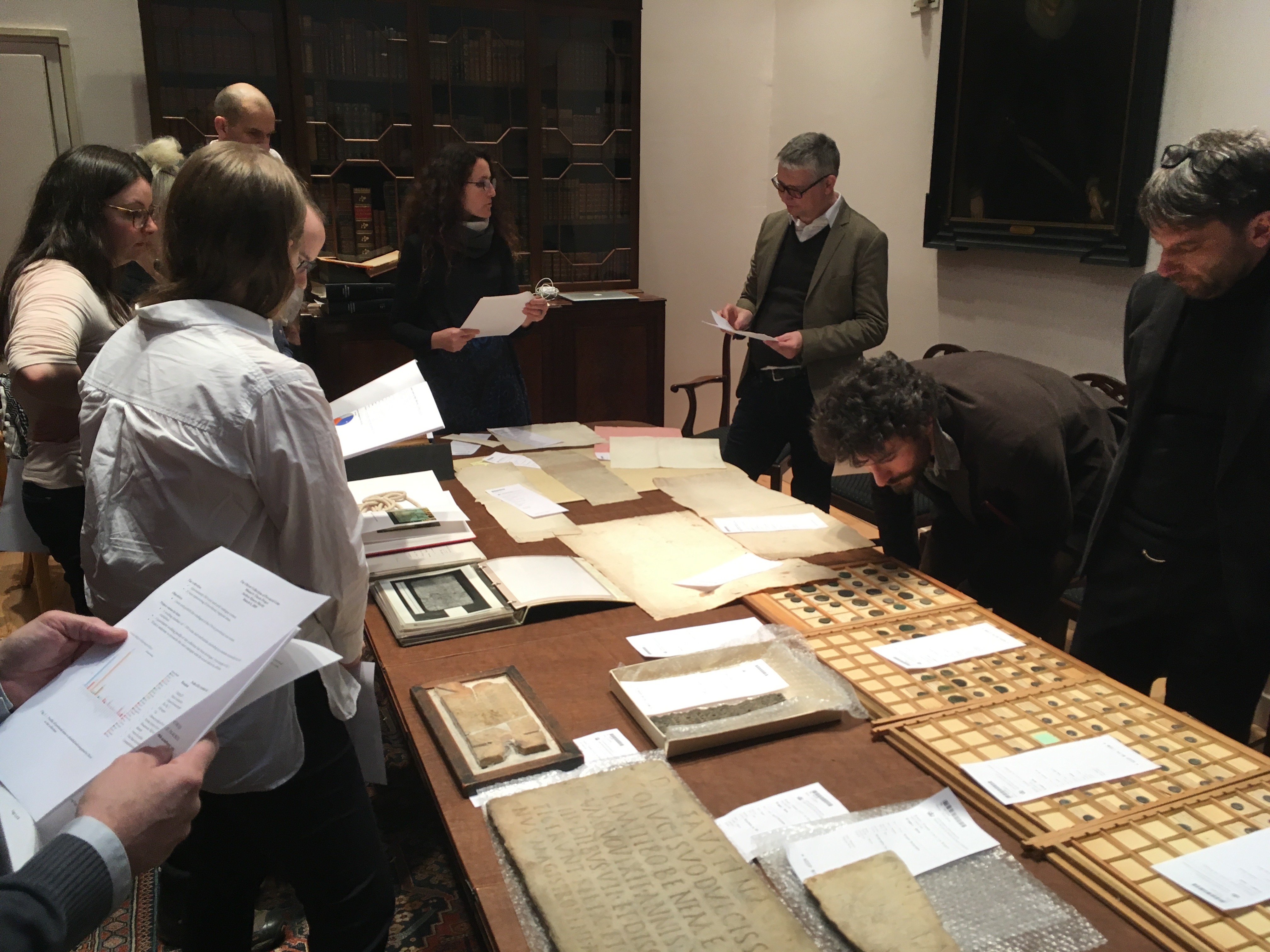
Columbia alumna Dr. Lucia Carbone (American Numismatic Society) and workshop participants studying Roman coins in the Olcott Collection
Directed by Alain Duplouy, classical archaeologist, former Chair of the Department of Art history and Archaeology (2012-2017), and now Chancellor’s delegate for heritage and real estate (2016-2020), the AGIAs project has enabled faculty and graduate students in Paris to study and inventory a large part of its antiquities collection (297 original pieces), leaving aside the plaster casts (129 pieces) to be processed and various papers focused on the history and legal status of vases and sherds in the collection (about 160 pieces) have been published.[1] As part of the Parallel Heritages, Humanities in Acion! work will continue in the coming years by taking into consideration other types of materials: terracottas have been processed this year[2], while architecture, and sculptural fragments, inscriptions, Pompeian paintings, and plaster casts remain to be studied.
Another extraordinary piece has been rediscovered recently. Beside the plaster model of the city of Rome, once exhibited on the fourth floor of the Institut d’art et d’archéologie, the Université de Paris also commissioned another copy of this model, this time casted in bronze by the famous Parisian jeweler Christofle. A gilded bronze model of the city of Rome was created in 1927-1932 for the university under supervision of the architect Paul Bigot. This extraordinary and unique piece of artwork was produced through electrotyping (or galvanoplasty), a chemical method for forming metal parts that exactly reproduce a model. The bronze model, made out of 40 parts as a gigantic puzzle, extends on about 30 sqm. It represents large parts of the city of Rome at its urban apex (ca. 300 AD). For strange reasons, the piece has never been exhibited; it was stored in the basement of the building for nearly a century, therefore being preserved from potential damage that the War or the May 68 events could have cause. The Université Paris 1 Panthéon-Sorbonne has engaged in studying, restoring and valorizing this masterpiece of its cultural heritage, with the assistance of the jeweler Christofle. Thanks to the researches conducted in the frame of the project Parallel Heritages, Humanities in Action!, a third copy of this model was also traced in the Pennsylvania art museum, purchased to the French architect thanks to a generous donation of J.D. Rockefeller. Unfortunately, this plaster copy has also perished in the 1960s, but archives at the Rockefeller Archive Center in Sleepy Hollow and at the Philadelphia Art Museum allow to study this other extraordinary piece of transatlantic heritage connections.
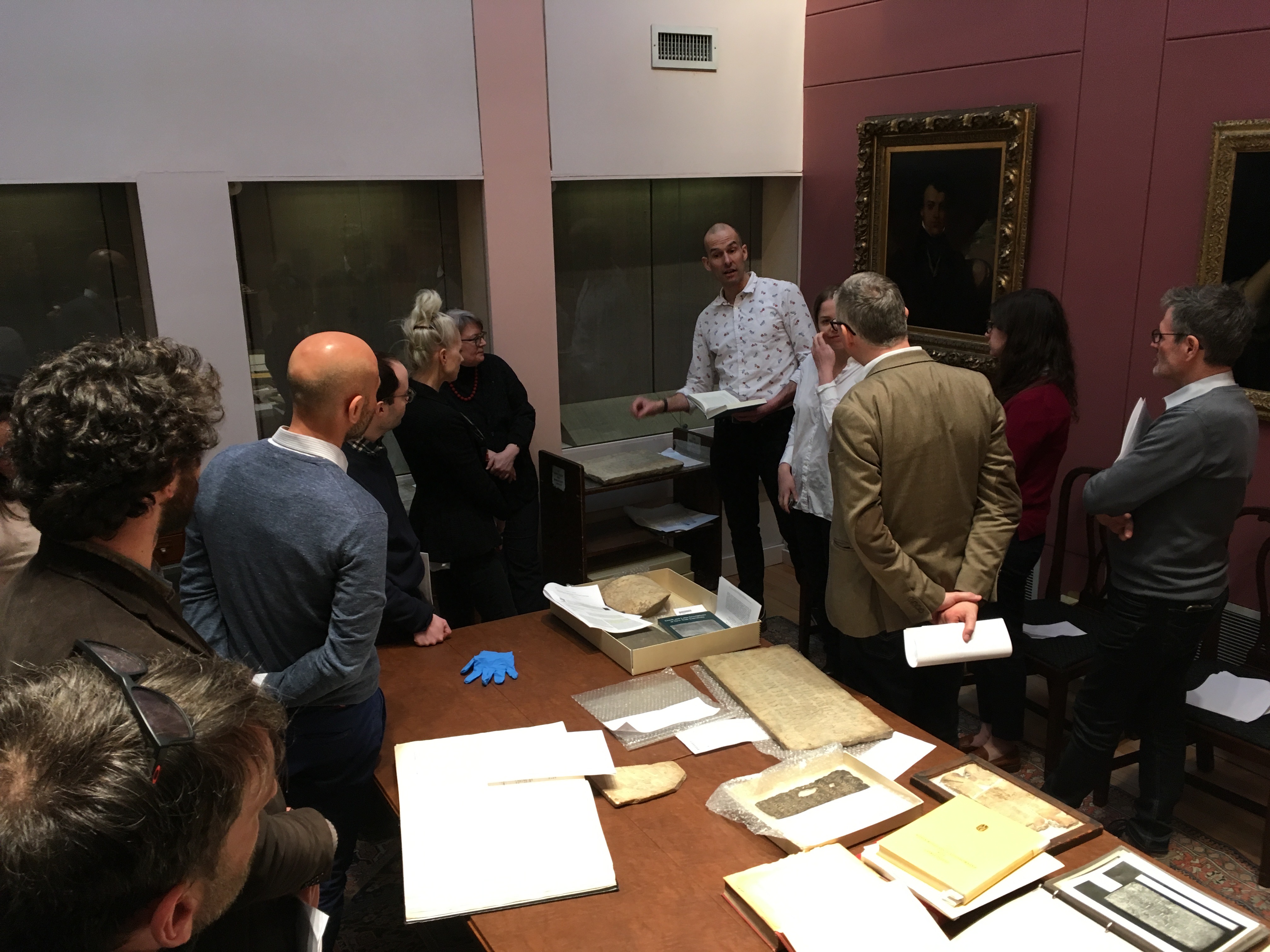
Dr. Joe Sheppard (Columbia University) introducing Roman inscriptions and epigraphic squeezes from the Olcott Collection at Butler Library’s Rare Books and Manuscript Study Room
Columbia University owns a large collection of works of art, among them thousands of Classical Greek, Etruscan, Roman, and East Asian antiquities, prints, drawings, and paintings from all periods, as well as a large number of public sculptures, coins, and other artifacts in various media. The collection was established as early as the 1750s, when King George II of England donated silver to what was then called King’s College in the city of New York, the predecessor of Columbia University. Over the decades and centuries, the collection grew steadily through large and small gifts of alumni, faculty, and other benefactors, but because of the early founding of major public art and ethnographic collections in the City of New York in the last decades of the nineteenth century—the American Museum of Natural History and the Metropolitan Museum were established in 1869 and 1870 respectively—the Trustees of Columbia University made the conscious decision not to compete with these local institutions by founding their own university art museum. Instead, Columbia faculty members, who, in the early years, often held joint appointments as curators at these museums, have taken—and continue to take—students to these institutions to teach within their collections and to advance research on their, by all standards, extraordinary objects.
Because Columbia University decided against the establishment of its own museum, it has, with the exception of a small number of dedicated public display cases in Low Library, no major gallery dedicated to the permanent or rotating display of its collection, and no comprehensive database. Many of the collection’s holdings, especially light-sensitive, precious, or archaeological objects, have thus long remained unknown even to professors and students in the Department of Art History and Archaeology. Regrettably, no major campaign to solicit research, cataloguing, or comprehensive conservation of Columbia University’s art collection was undertaken during the last century. The situation began to change only within the last five years under the aegis of Roberto Ferrari, Curator of Art Properties, who encouraged faculty and students to become more engaged in research, cataloguing, and publication projects focused on objects and distinct collections within Art Properties.[3]
One notable project started in the last few years was a cataloguing and publication project spearheaded by Professors Francesco de Angelis (Department of Art History and Archaeology) and Marco Maiuro (formerly Department of History) that focused on the archaeological collection of George N. Olcott (1869-1912), who served as lecturer and professor of Latin and of Roman Archaeology at Columbia University from 1898 until his early death of pneumonia, and whose collection lay dormant in the vaults of the university for over a century. One of the first American classicists to realize the importance of material culture for the study of the ancient world, Olcott assembled his collection of ancient objects to further both his studies of linguistics, architecture and daily life, and to provide research material for other American scholars. Olcott acquired thousands of ancient coins, hundreds of fragments of ceramic vessels and epigraphs, and groups of other artifacts including jewelry, lamps, weapons, tools, stamped bricks, and marble samples. The core of the collection remains at Columbia, but other objects were donated or sold (both during his lifetime and afterward) to the Brooklyn Museum, the University of Illinois at Urbana-Champaign, and the American Academy in Rome. A few other items are still in the estate of Olcott’s descendants.
As a student and scholar, Olcott was keenly interested in linguistics; he studied Sanskrit at Columbia and Hungarian in Rome, learned Romany from gypsies and produced several works on the Latin sermo vulgaris, i.e. the language of the common person. As an educator, he believed that the best way to teach his students about the Romans was through their own words. Each inscription in Olcott’s collection provides information about ancient life and as a group they illustrate the variation over time of both the artifacts and of the language.
Integrated into the curriculum of the Departments of Art History and Archaeology, Classics, and Classical Studies at Columbia, the George Olcott Collection has given students first-hand experience in working with archaeological artifacts of the highest quality and have resulted in increased knowledge and awareness about the various collections and collectors who donated them to the University. As such they serve as models for intensive future research on these and other underexplored parts of the university’s collection.
A first step in this direction was made in March 2019 with support of a Global Humanities Grant that allowed us to mount a weeklong research seminar, which gave faculty members and graduate students at Columbia an opportunity to present the Olcott, Young, and other parts of the university’s collection to a group of colleagues from the Sorbonne, thus providing a forum for interdisciplinary exchange and first-hand exploration of each collection. The French delegation of doctoral students, post-doctoral scholars, and faculty members, were likewise able to present aspects of the history of the Sorbonne Collection to a broader group of Columbia graduate students, post-doctoral scholars, and faculty members. In addition to workshop session held at Avery Library’s Wallach Fine Arts Study Center, in the Art Properties Storage Facilities, and at Butler Library’s Rare Book and Manuscript Collection, workshop participants visited Fordham’s Collection of Antiquities and discussed its controversial acquisition with curator Jennifer Udell.
The second joint research seminar, scheduled to be held in Paris in early November, will soon give Columbia students and faculty members an opportunity to study the Sorbonne Collections in situ, meet with museum curators and conservators at the Musée du Louvre, and to discuss ongoing research on both collections with a broader group of French colleagues and peers. As such, our collaboration is expected to lay the foundations for a better understanding of the historical connections and divisions between European and American institutions of higher education and learning, their history of collecting antiquities, and their use of casts and historical artifacts for teaching and research. As a partner in our venture, the Council of European Studies will feature the results of our ongoing research in EuropeNow.
Alain Duplouy is Reader in Greek archaeology at the Université Paris 1 Panthéon-Sorbonne. A former Dean of the Faculty of Art history and archaeology, he is now the Chancellor’s delegate for the university real estate and cultural heritage. He received his PhD from Brussels and Paris universities in 2003 in both archaeology and history, and his Habilitation from Paris in 2017. He was British Academy visiting scholar in Leeds in 2009, Fulbright scholar at UCLA in 2011 and Fellow in Hellenic Studies at Harvard University in 2018/9. He has led archaeological fieldwork programs in Greece (Itanos) and Italy (Laos and Pietragalla) and has published extensively on elites and citizenship in archaic Greece. He is the author of Le Prestige des élites (Les Belles Lettres, 2006) and has edited with Roger Brock the collective volume Defining citizenship in archaic Greece (Oxford University Press, 2018). His new book (Construire la cité, Les Belles Lettres, 2019) offers a sociology of the various communities of archaic Greece.
Holger A. Klein is the Lisa and Bernard Selz Professor of Medieval Art History at Columbia University. He was educated at the universities of Freiburg im Breisgau, Munich, London, and Bonn. His research focuses on Late Antique, Early Medieval, and Byzantine art and architecture. From 2004–07 he held an appointment as the Robert P. Bergman Curator of Medieval Art at the Cleveland Museum of Art. He is the recipient of several awards and prizes, including the 50th annual Mark Van Doren Award for Teaching (2011), the Lenfest Distinguished Faculty Award (2012), and the Wm. Theodore de Bary Award for Distinguished Service to the Core Curriculum (2014).
[1] A. Duplouy and A. Asselineau, “La collection d’antiquités grecques de l’Institut d’art et d’archéologie de Paris. 1. La céramique,” in: Journal des Savants(2016), pp. 85–137; “La collection de vases grecs de l’Institut d’art et d’archéologie et l’évolution de l’enseignement de l’archéologie à l’Université de Paris” and “Statut juridique de la collection de vases grecs de l’Institut d’art et d’archéologie,” in: M. Lagrange (ed.), Université & Histoire de l’art. Objets de mémoire (1870–1970), Rennes 2017.
[2] A. Duplouy and C. Bruschini-Chaumet, “La collection d’antiquités grecques de l’Institut d’art et d’archéologie de Paris. 2. Les figurines en terre cuite,” in: Journal des Savants(2019), in print.
[3] Eve Kahn, “Raising the Profile of Columbia’s Art,” in: The New York Times, January 8, 2015.
Published on September 10, 2019.


